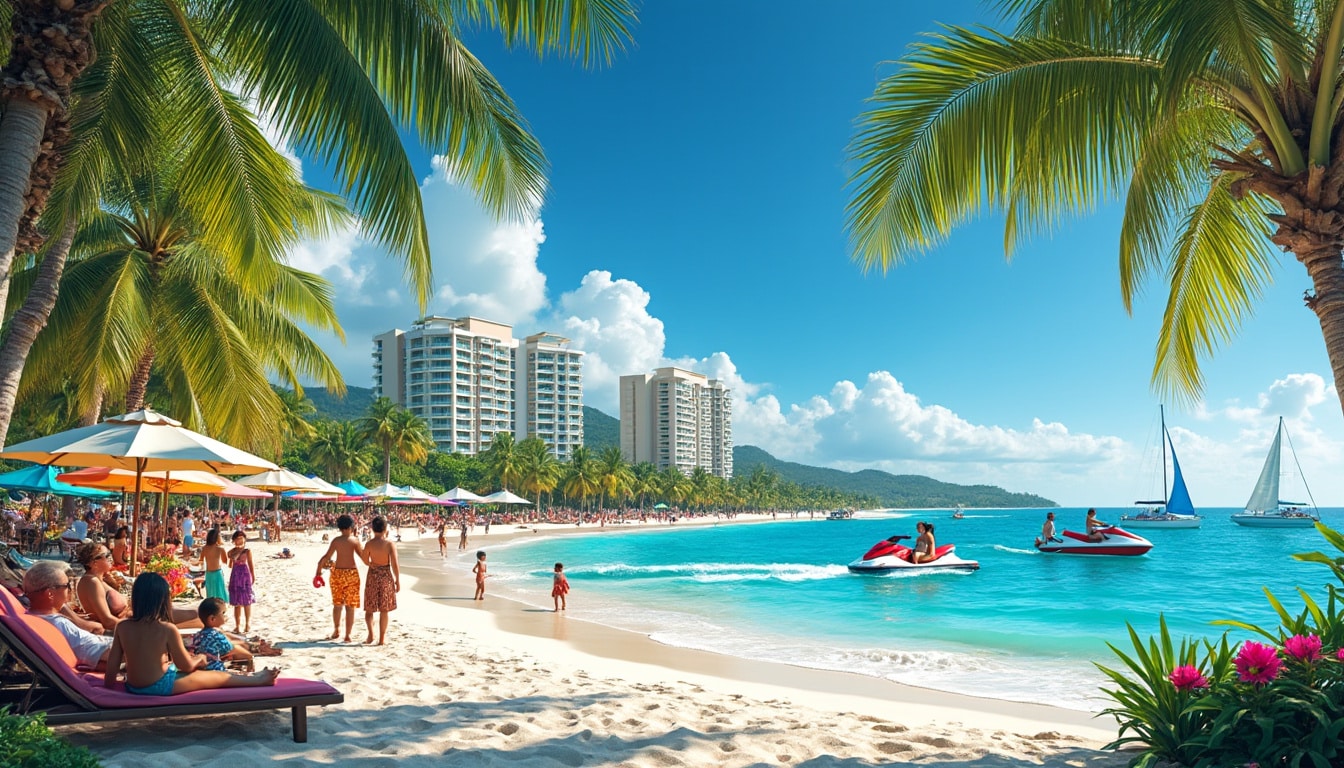In the heart of the Caribbean, Punta Cana shines as a beacon of sun-kissed beaches and azure oceans. This region, nestled on the eastern edge of the Dominican Republic, serves as a haven for tourists seeking the idyllic tropical escape. Yet, beneath its inviting sands lies a tapestry woven with rich demographics and dynamic geography. From its rapidly growing population to the captivating landscapes that frame its beauty, Punta Cana is more than just a luxury resort destination. This exploration delves into the framework that holds this paradise together: its geography, development, and the ever-evolving community.
Punta Cana’s Flourishing Population: A Demographic Overview
Punta Cana stands as a testament to rapid urban growth and diversification in the Caribbean. By 2025, the population of this bustling resort town has soared beyond 138,919 residents, reflecting a vibrant mix of cultural backgrounds and economic influences. A significant part of the demographic tapestry is woven from both local Dominicans and a considerable number of Haitian immigrants who contribute to the workforce, particularly in the tourism sector.
This growth has been sustained by the influx of tourists and expatriates attracted by the region’s economic opportunities. The demographics indicate a youthful population, with a median age lower than many global counterparts, which positions Punta Cana as a dynamic hub with ample human resources. The young population fuels the service-driven economy, heavily centered around hospitality and tourism.
The distribution of residents showcases a dense concentration of workers in sectors linked to resort management and tourism. This includes employment in luxury accommodations such as HEAVEN at Hard Rock, Barceló Bavaro, Majestic Elegance, and Iberostar Grand Hotel. Moreover, residential areas such as Verón-Bávaro have seen spontaneous urban development, offering a contrast to the carefully planned tourist hubs.
| Demographic Aspect | Details | Emoji |
|---|---|---|
| Population (2025) | 138,919 | 🌍 |
| Median Age | 27.6 years | 👶👵 |
| Immigrant Population | Predominantly Haitian | 🗺️ |
| Sector of Employment | Tourism and hospitality | 🏨 |
Such a demographic structure requires a robust infrastructure that supports both the resident workforce and the millions of visitors arriving annually. Initiatives to enhance educational opportunities and healthcare facilities are ongoing, with institutions like the Ann & Ted Kheel Polytechnic school and the Puntacana International School playing pivotal roles. As Punta Cana continues to evolve, its demographics will undoubtedly shape its future trajectory, ensuring it remains a leading destination for both leisure and living.
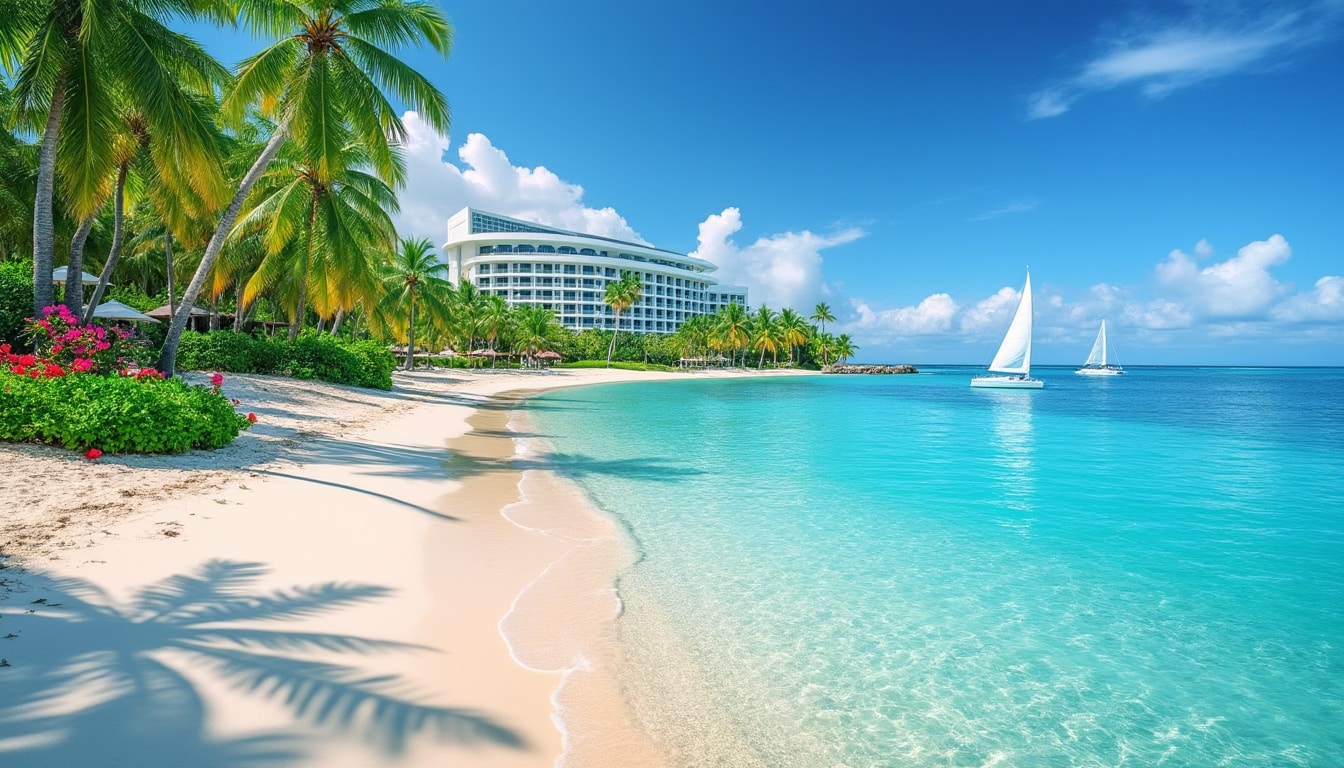
The Geographic Enchantment of Punta Cana: An Ideal Location
Positioned strategically on the easternmost tip of the Dominican Republic, Punta Cana boasts a geography that is as inviting as it is strategic. With its borders touching both the Caribbean Sea and the Atlantic Ocean, its location ensures it benefits from calm waters perfect for a myriad of aquatic activities. It stretches across a span that includes famous beaches like Bavaro Beach, Arena Gorda, and El Cortecito, each characterized by powdery white sands and vibrant marine life.
This geographical advantage is heightened by a climate that is consistently warm, making it an attractive year-round destination. The tropical wet and dry climate features an average temperature hovering around 26°C (79°F), ensuring that sunshine and warmth are almost perpetual companions to the scenic landscapes. This constant sunshine, coupled with mild ocean breezes, provides an environment ripe for both relaxation and adventure.
Punta Cana also boasts extensive natural marine pools among its shallow waters, offering visitors safe recreational zones amidst stunning aquatic vistas. This feature makes it a preferred choice for families and casual tourists seeking safe yet thrilling swimming experiences.
In addition to its natural allure, the area is undergoing significant infrastructure enhancements. The Punta Cana International Airport, strategically located 3 kilometers inland, serves as a crucial gateway linking the region to the world. This airport handles an impressive 64% of inbound flights to the Dominican Republic, underscoring its pivotal role in connecting global travelers to the island’s treasures.
Furthermore, the district of Verón, situated along the highway linking Higüey to La Romana, has seen rapid industrialization and development. This growth reflects a microcosmic model of how geography intertwines with robust planning to foster economic prosperity.
| Geographical Feature | Detail | Emoji |
|---|---|---|
| Coastal Borders | Caribbean Sea and Atlantic Ocean | 🌊 |
| Main Beaches | Bavaro, Arena Gorda, El Cortecito | 🏖️ |
| Climate | Tropical, 26°C average | ☀️ |
| Key Infrastructure | Punta Cana International Airport | ✈️ |
As Punta Cana’s geographic and environmental charms continue to captivate the world, its conscientious development initiatives position it to maintain its status as a global top-tier destination. The seamless blend of nature and infrastructure illustrates a model of sustainable living and tourism investment.
The Evolution of Punta Cana’s Resort Scene: From Secluded Getaways to Luxurious Hubs
Since the late 1960s, Punta Cana has transformed from remote stretches of pristine beach into one of the world’s most sought-after resort destinations. The evolution of its resort landscape is a story of entrepreneurial vision and strategic planning. Initially spearheaded by Frank Rainieri and Theodore Kheel, their venture laid the foundation of what would become a thriving tourism empire.
Today’s Punta Cana is synonymous with luxury, powerfully encapsulated in the elegant resorts dotting its shores—such as the Secrets Cap Cana, Melia Caribe Beach, and the Royalton Punta Cana. These establishments elevate the region’s reputation, catering to diverse tastes ranging from opulent exclusivity to family-oriented fun.
Among the earliest developments was the opening of the Punta Cana Club in 1970, which paved the way for further expansion with the involvement of major European hotel chains. By 1978, premier establishments like Barceló and the Paris Mediterranean Club joined the landscape, marking the beginning of Punta Cana’s rise as a hospitality powerhouse.
The growth trajectory gained momentum with the inauguration of the Punta Cana International Airport in 1984, crucial for facilitating a steady stream of international tourists. Notably, between 1996 and 2020, expansion catalyzed by influential figures such as Óscar de la Renta and Julio Iglesias further enhanced its international appeal.
Each resort contributes uniquely to the area’s character. For instance, Cap Cana represents upscale, lavish living—offering not just accommodation but exclusive golfing experiences among stunning oceanic backdrops. In contrast, Majestic Elegance and Iberostar Grand Hotel blend cultural elegance with leisurely comfort, ensuring an unforgettable stay for every visitor.
- 🏨 HEAVEN at Hard Rock: Known for its vibrant atmosphere and rock-star treatment.
- 🏝️ Cap Cana: Renowned for its luxurious amenities and scenic golf courses.
- 🍹 Majestic Elegance: Offers a sophisticated blend of culture and relaxation.
- 🌟 Iberostar Grand Hotel: Famous for top-tier service and majestic architecture.
- 🌿 Melia Caribe Beach: An eco-friendly sanctuary along the coast.
The resorts extend beyond luxurious lodging; they integrate into the local economy by employing residents and providing platforms for local culture and entertainment. This dual-role fosters a symbiotic relationship that enhances both the tourism sector and community development.
The Socioeconomic Backbone: Infrastructure and Community Development
Punta Cana’s rise as a tourism giant is firmly supported by a solid infrastructure that undergirds both its economic activities and community life. This region’s development has been characterized by a blend of private ambition and public policy, aiming to create a sustainable model for growth and prosperity.
At the forefront of this development is the Punta Cana International Airport, which remains the primary conduit for the millions arriving annually. The airport’s continual upgrades reflect an acute awareness of the importance of maintaining a seamless link to global visitors.
Moreover, Punta Cana’s local economy is energized by a network of roadways connecting various parts of the region, such as the Coral Highway, which eases the movement of goods and people between the central townships and tourist spots. This connectivity is crucial in maintaining accessible services and easing the tourist influx, especially during peak seasons.
| Infrastructure Component | Significance | Emoji |
|---|---|---|
| Punta Cana International Airport | Primary travel hub | 🛬 |
| Coral Highway | Vital for transportation | 🛣️ |
| Public Services | Healthcare and education | 🏥 |
| Renewable Energy Initiatives | Environmentally friendly power supply | 🔋 |
Energizing this infrastructure is the Consorcio Energetico Punta Cana Macao (CEPM), the region’s primary energy provider. Under the leadership of US-based entrepreneur Rolando Gonzalez-Bunster, CEPM spearheads initiatives blending fossil fuels, renewable sources, and biomass to ensure a reliable and sustainable power supply.
Additionally, the hospitality sector’s investments into community initiatives are noteworthy. Through the Puntacana Foundation’s diverse programs, there is a clear commitment to environmental stewardship, education, and community health. These efforts ensure the welfare of both the natural surroundings and the residents who call Punta Cana home.
The Tourist’s Paradise: Attractions and Activities in Punta Cana
Punta Cana isn’t just a place to lay back and enjoy the tranquil beaches—it’s a vibrant destination offering an array of activities for every kind of traveler. Whether diving into the azure depths or exploring the lush landscapes, there’s no shortage of excitement to be found.
Water sports are at the heart of Punta Cana’s tourism appeal. The calm, shallow waters are perfect for scuba diving and snorkeling, where the protected marine reserves reveal lush coral gardens teeming with life. Kayaking and deep-sea fishing offer exhilarating alternatives for those looking to navigate the cerulean waters.
On land, adventures include exploring the inland natural wonders like Los Haitises National Park or the historical sites in the city of Santo Domingo. Meanwhile, excursions such as horseback riding along the beaches or a more thrilling ride on dune buggies cater to the adventure-seekers.
Culture enthusiasts will find Punta Cana engaging with its Caribbean music, dance festivals, and art exhibitions often hosted within the resorts. Additionally, culinary tours provide a taste of traditional Dominican flavors, featuring fresh seafood and tropical fruits in every bite.
- 🐬 Snorkeling and Scuba Diving: Explore the thriving underwater ecosystems.
- 🐠 Fishing Cruises: Deep-sea adventures await avid fishers.
- 🐴 Horseback Riding: Enjoy scenic rides along the picturesque coastlines.
- 🏞️ National Park Tours: Discover the beautiful biodiversity of the Dominican countryside.
- 🍽️ Cuisine Tastings: Savor local dishes rich in Caribbean culture.
Punta Cana also provides easy access to nearby Caribbean islands like Saona and Catalina, where day trips offer secluded escapes from the bustling resorts. The integration of travel experiences ensures visitors are not just sunbathing by the pristine beaches but engaging with the essence of Caribbean life.
FAQs: Your Questions Answered
What is the best time to visit Punta Cana? 🌤️
Punta Cana offers a pleasant climate year-round, but the best months are between December and April when the weather is cooler and less humid.
Are there natural hazards to be aware of? 🌀
While mostly safe, Punta Cana is occasionally in the path of hurricanes during the tropical storm season (June to November). Visitors are advised to stay updated on weather forecasts.
What cultural experiences can I expect in Punta Cana? 🎶
Travelers can enjoy local music and dance festivals, art exhibitions, and culinary tours showcasing traditional Dominican cuisine.
Is Punta Cana family-friendly? 👨👩👧👦
Yes, Punta Cana offers numerous family-oriented resorts and activities, ensuring a safe and enjoyable stay for all ages.
How can I get around the area? 🚗
Punta Cana has various transportation options including taxis, rental cars, and shuttle services provided by resorts for convenient travel across the area.
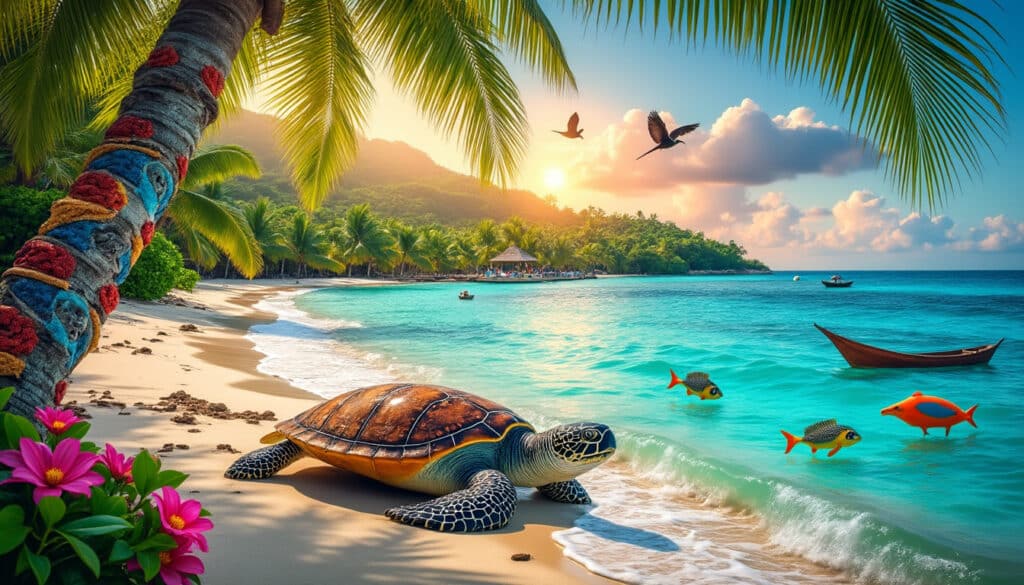
Fun Facts & Curiosities About Punta Cana
If you’re seeking a breathtaking escape to paradise, look no further than Punta Cana. Nestled on the eastern coast of the Dominican Republic, this vibrant destination boasts an impressive array of dazzling beaches, rich history, and vibrant culture. Here, visitors…
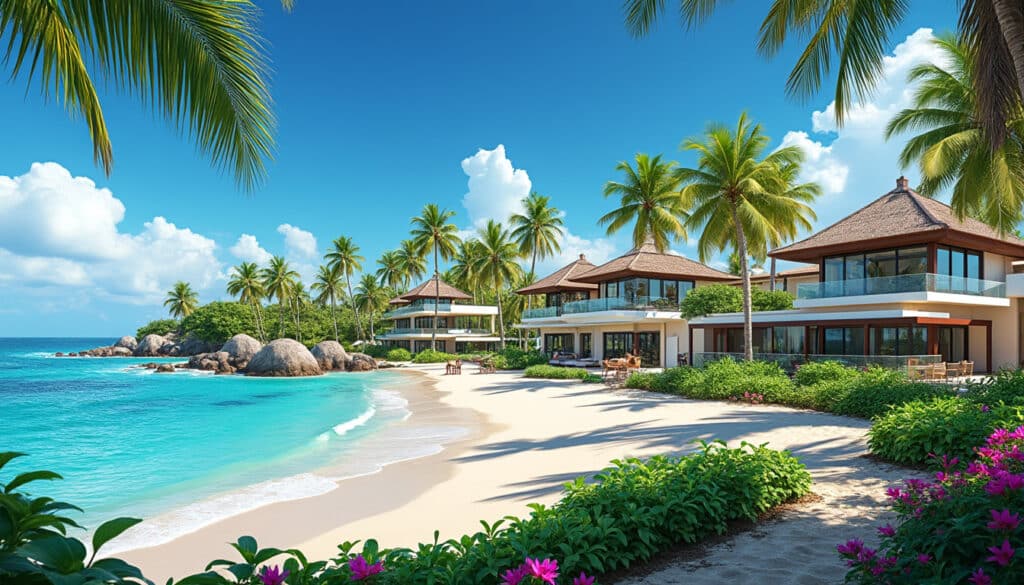
Architecture and urban features of Punta Cana
Punta Cana, a region celebrated for its sun-kissed beaches and clear azure waters, is not merely a paradise for beachgoers—it is a symphony of architectural splendor and urban allure. This Dominican wonderland melds traditional influences with cutting-edge design, offering a…

Living in Punta Cana in 2025 provides a unique blend of paradise vibes and modern lifestyle. From its mesmerizing beaches to a thriving expat community, this Dominican haven offers a lifestyle suitable for those seeking both tranquility and activity. The…
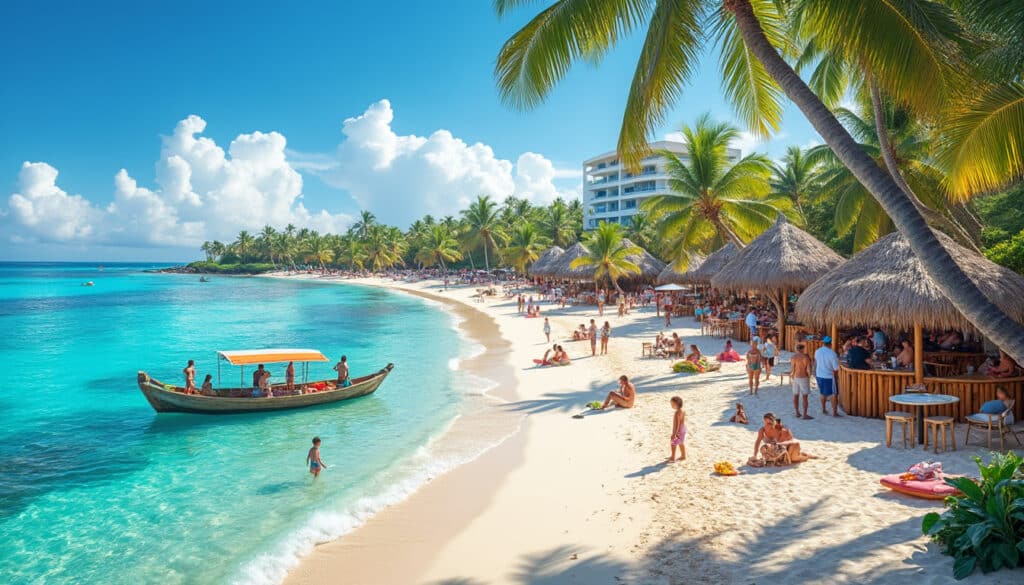
Once an obscure, untouched gem, Punta Cana is now a renowned tropical paradise nestled in the eastern part of the Dominican Republic. This transformation from a dense jungle to a world-renowned tourist destination is a captivating story of vision, investment,…

Holidays and celebrations in Punta Cana
In the heart of the Caribbean lies a tropical paradise rich in culture and bursting with vibrant celebrations. Punta Cana, a dazzling gem on the eastern edge of the Dominican Republic, offers more than just sun, sea, and sand. It…
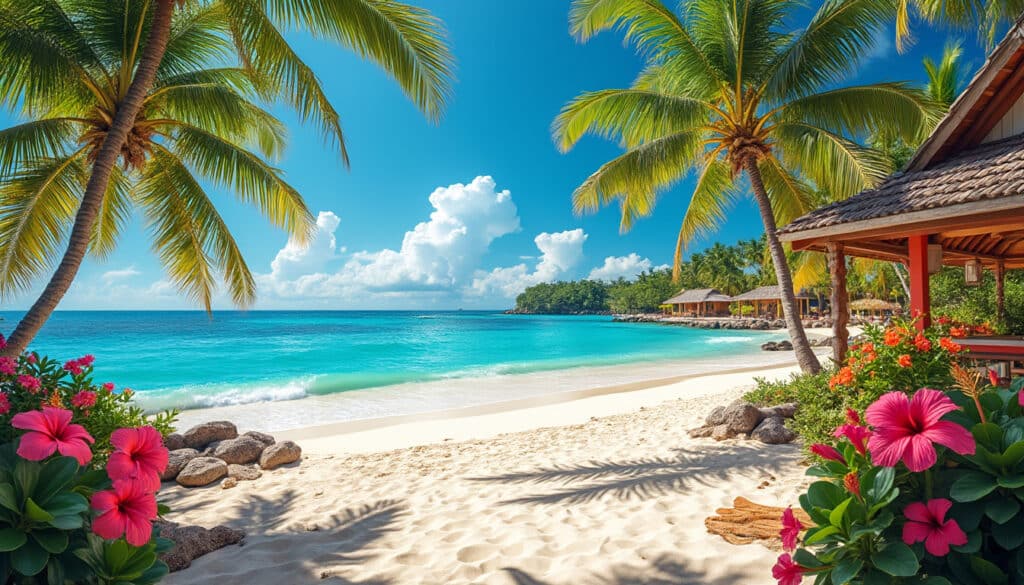
Language and spelling of Punta Cana
Surrounded by azure waters and sunlit beaches, Punta Cana stands as a cornerstone of cultural exchange and tourism in the Caribbean. The linguistic tapestry of this paradise is as vibrant and varied as its natural beauty. With Spanish reigning as…
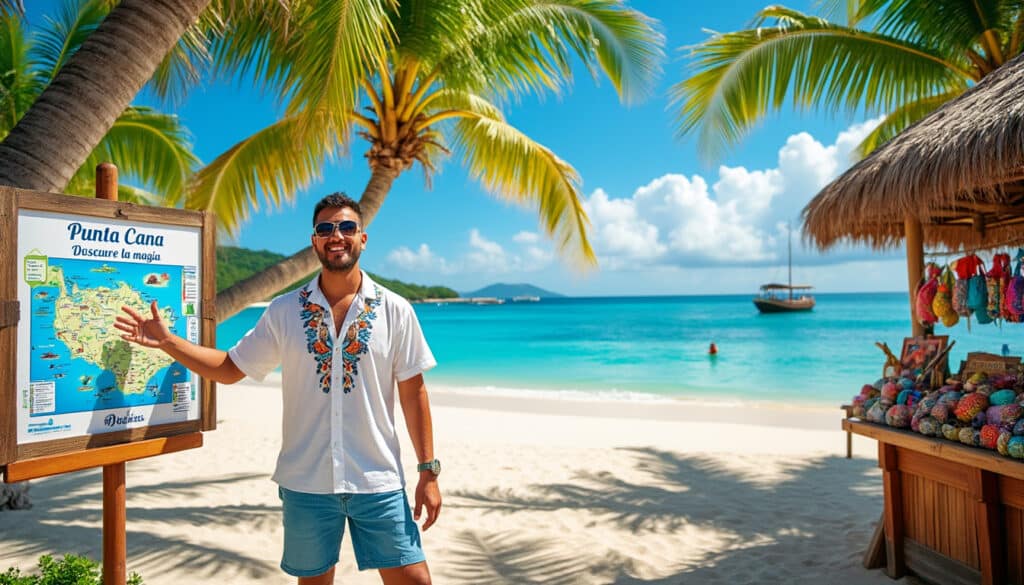
Local tips for tourists in Punta Cana
Visiting Punta Cana promises lush beaches, vibrant culture, and endless exploration opportunities. Yet, maximizing your experience goes beyond merely reaching your destination. To truly immerse in what this Caribbean paradise has to offer, proper preparation, understanding of local etiquettes, and…

Names, flags, and identity of Punta Cana
Unveiling the mesmerizing allure of Punta Cana, this article delves into the intricate layers of its identity, from its evocative name to the vibrant symbols that capture its essence. As the easternmost paradise of the Dominican Republic, Punta Cana resonates…

Reputation and identity of Punta Cana
The splendid strip of heaven known as Punta Cana has etched its identity on the global map through its stunning beaches, vibrant culture, and distinctive charm. Nestled in the Dominican Republic, it stands not just as a tourist destination but…
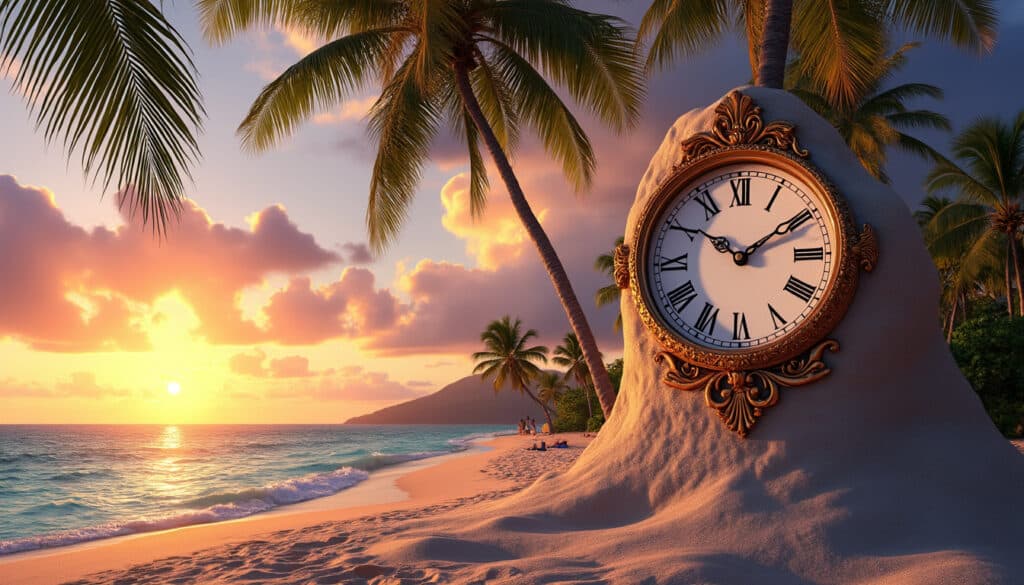
Time and time zone in Punta Cana
Punta Cana, one of the most alluring travel destinations in the Dominican Republic, is known for its pristine beaches, vibrant culture, and dynamic energy. However, understanding its time zone and how it affects daily life there is crucial for any…

Unusual facts and social issues in Punta Cana
As one of the Caribbean’s premier destinations, Punta Cana is often seen as synonymous with paradise. Its sun-drenched beaches and luxurious resorts promise a getaway of dreams. Yet beneath this tropical veneer lie unusual facts and social issues that many…
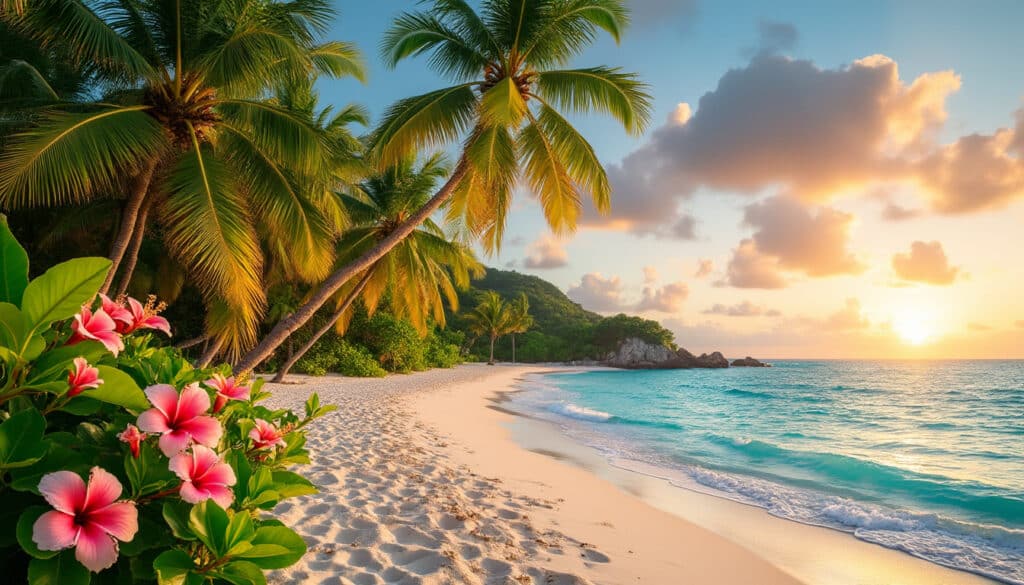
What does Punta Cana look, smell, feel like?
Immerse yourself in the sensory tapestry of Punta Cana, where every moment is a vivid experience. This popular Caribbean destination promises not only relaxing beaches and luxury resorts but also a vibrant atmosphere that tantalizes the senses. From the lush…

